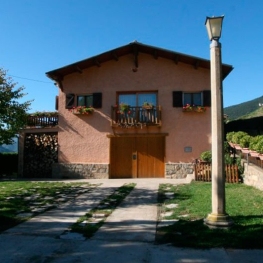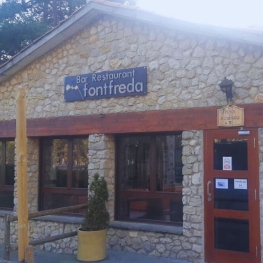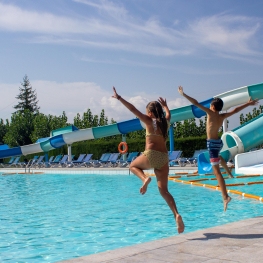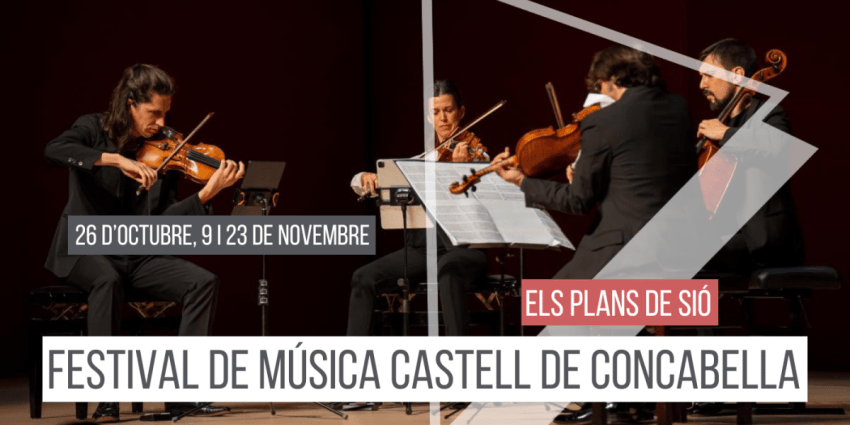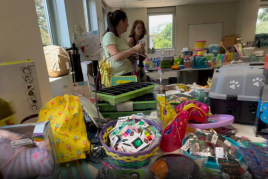The Fia-Faia, Christmas tradition

Started in December we are very close to the Christmas party, the streets are decorated and popular traditions resurface again recalling the practices that our ancestors exercised.
In Catalan popular festivals are often closely linked with fire and Christmas is no exception. Often we link festive practices with fire in the warmer months but they not only held during the summer solstice, but fire can also give a warm welcome to winter.
For example, in Berguedà, particularly in the medieval village of Baga , during Christmas night, December 24, collectively burn what they call "faies" which are torches vegetables. This practice is also common in the town of Sant Julia de Cerdanyola .
This tradition turned into a popular celebration known currently as the Fia-Faia and is the feast of Baga and Sant Julia de Cerdanyola femTurisme this month invites you to know and to be participants in the first person, to live this time of another way. In addition, in 2015 this party was declared Cultural Intangible Heritage of Humanity by UNESCO.
The Fia-Faia
The fire, along with torches vegetable is the star of this party linked to Christmas, known as the Fia-Faia.
 The presence of fire at this event is believed to be related to the winter solstice. One could interpret a prayer pagan sun in order to prevent shortening of the days. At the same time, although it is believed that the festival is pre-Christian origin, remember the birth of Jesus Christ as it is many religions fire symbolizes fertility and birth.
The presence of fire at this event is believed to be related to the winter solstice. One could interpret a prayer pagan sun in order to prevent shortening of the days. At the same time, although it is believed that the festival is pre-Christian origin, remember the birth of Jesus Christ as it is many religions fire symbolizes fertility and birth.
The nickname by which the feast is known - Fia-Faia - is not to mean more to turn or burn fail, as Fia comes from a Latin verb meaning WHILE celebrate or take place that seems to derive from Faia failure that term is synonymous with dead branches or some combustible material.
The reason why Faia is written with an "i" instead of "ll" may be as a result of old never baganeses not pronounce "ll" who attached the sound of an "i".
This party identification of part of Catalonia and unique as it being a widespread cult has become a minority party, was declared in 2011 Feast of national interest by the Generalitat de Catalunya.
The ritual of the festival
This festival takes place on Christmas Eve, specifically, during the evening of December 24 and is celebrated simultaneously in two towns in Catalonia, Baga and Sant Julia de Cerdanyola . This begins the period of the holiday season in the two municipalities.
The festival involves burning torches known also as fail to celebrate the winter solstice took place after the "toc d'oració" (call to prayer).
 So later, before the "toc d'oració" and fail collective burning of a group of adults fallaires have to bring fire to the people allowing them to light the torches. This fire is brought into the town from the mountain of Siti, taking advantage of the opportunity that is where the sun sets and does not match the same amount of Baga with that of Sant Julia de Cerdanyola , light a small fire. The small fire is visible from both municipalities.
So later, before the "toc d'oració" and fail collective burning of a group of adults fallaires have to bring fire to the people allowing them to light the torches. This fire is brought into the town from the mountain of Siti, taking advantage of the opportunity that is where the sun sets and does not match the same amount of Baga with that of Sant Julia de Cerdanyola , light a small fire. The small fire is visible from both municipalities.
These people, when they come down the mountain and reach the village, the fire spread to the rest of impatient waiting fallaires burning torches. Witness the colorful recommended carriers drop fire runs along the flat road.
Once it reaches the fire begins to sound the "toc d'oració" and that burning the fail, is accompanied singing "Fia-Fai, Fia-Faia, who has nascut Senyor nostre the paia".
Held this ritual the days become longer and return the splendor of good weather because sardañolenses baganeses and burned during his Christmas Eve fail.
The Baga party i in Sant Julia de Cerdanyola
Both Baga as in Sant Julia de Cerdanyola party Fia-Faia follows the ritual, although both municipalities have incorporated their customization items and have adopted new habits to celebrate that do not alter the original liturgy.
In Baga , formerly held the Fia-Faia through its streets and it is a small town of about 2,000 inhabitants. Today it is celebrated in a specific space in the Plaza de Catalunya. This square is home to nearly two hundred arcaded torches.
 Moreover, recalling medieval village, is chosen a baron and a baroness who are residents of the municipality. They preside over the acts of the party and are what give the go-ahead to fail burning the afternoon of 24 December, when the Baron turned his torch once have welcomed the Lords of Faia.
Moreover, recalling medieval village, is chosen a baron and a baroness who are residents of the municipality. They preside over the acts of the party and are what give the go-ahead to fail burning the afternoon of 24 December, when the Baron turned his torch once have welcomed the Lords of Faia.
When fail are almost consumed the throw to the ground, grouping and forming hogueruelas and children and young people jumping with the chant of "Fia-Faia, Fia-Faia, Nostremar Senyor ..." and surrounded by a circle that forms around.
When finished and already being dinner embers exploit soil and toasted bread that accompanied condony garlic mayonnaise (aioli quince).
In Sant Julia de Cerdanyola Square bonfires are kept on all night until the sun rises.
Around these, after burning fail and Gall Mass is celebrated a communal meal cooking sausages, meat, etc.. and toasted bread with garlic mayonnaise Christmas songs accompanied Codony. At the end conducted "l'endreça" (collection) of the houses, another tradition of the municipality.
"L'endreça" house is a walk through the village looking for something to pick up. Everything that is to collect the square takes and stays until the next day, Christmas Day. You can find tables and beach chairs, pots full of milk, pots, carts, signs, Christmas trees ...
As elaborated the "faies" or torches?
The "faies" or torches are nothing more than a braid made ??with a high-stemmed grass as they can get to make up to four meters high, known as Cephalaria leucantha and popularly as "white scabious", "Mossegada the diable" (bite the devil) or "failure". It grows by a part of the Berguedà and has the peculiarity of being a purifying plant.
 The plant has a diameter of between 15 and 30 inches and can be caught in the woods between terraces and costs. To make torches for Fia-Faia recommended pick a week before or at least from December 1.
The plant has a diameter of between 15 and 30 inches and can be caught in the woods between terraces and costs. To make torches for Fia-Faia recommended pick a week before or at least from December 1.
This does not have to be green, rather dry, and always have to cut, never starting, in order to ensure its existence and that next spring bloom again.
When they have collected the herb should make faia but this is not such an easy task as it might seem, as it involves skill. In Sant Julia de Cerdanyola , for example, all tied around a stick, cane or trunk symbolizes the soul. Unlike those of Baga that lack this element.
Photos: Pere Pedrals, Susanna BUJAN i Xavi Roca
What to do
Museu de les Mines de Cercs
Cercs (a 5.7 Km)Dedicated monographically to coal, it is a museum of technique and history…
Guies d'Arrel
Berga (a 14.4 Km)Guías d'Arrel is a company dedicated to providing support to nature, with…
Tren del Ciment
La Pobla de Lillet (a 6.5 Km)Travel with the Tren del Ciment in a unique place where you…
Where to eat
Restaurant Gust Picant
Berga (a 13.9 Km)At Gust Picant, you can enjoy affordable menus with a wide variety…
Hostal la Muntanya
Castellar de n'Hug (a 12 Km)Family hostel located in Castellar de n'Hug. It offers various accommodation options,…
Restaurant Font Freda
Castellar del Riu (a 14.9 Km)A restaurant offering a wide selection of Catalan dishes, especially notable for…
Where to sleep
Hotel Estel
Berga (a 14.7 Km)Hotel Estel, your refuge in Berga to discover the most authentic Berguedà!…
Hotel Casa Duaner
Guardiola de Berguedà (a 1.7 Km)The Casa Duaner Hotel in Guardiola de Berguedà offers modern facilities, a…
Berga Resort
Berga (a 14.7 Km)Tourist and sports center located in the Catalan Pre-Pyrenees (700 m high)…
Restaurant Apartaments Els Roures
Castellar del Riu (a 14.5 Km)Rest, charm and good cuisine, a unique space located in Berguedà, at…







